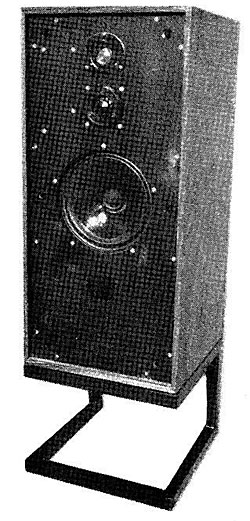| Columns Retired Columns & Blogs |
When I was in high school in 1977 I bought these speakers. Holt's assessment is right on.
They were reconed with Harbeth Radial drivers, which improved the performance considerably.
I enjoyed listening to them this afternoon.
 This smallish loudspeaker system has been getting high ratings in the English audio magazines for some years but was not available to US consumers until recently, when the small firm (literally a Mom'n'Pop enterprise, footnote 1) arranged for US distribution through Audio International.
This smallish loudspeaker system has been getting high ratings in the English audio magazines for some years but was not available to US consumers until recently, when the small firm (literally a Mom'n'Pop enterprise, footnote 1) arranged for US distribution through Audio International.







































